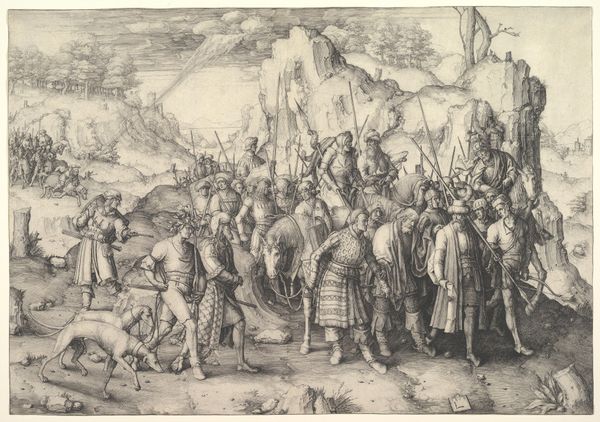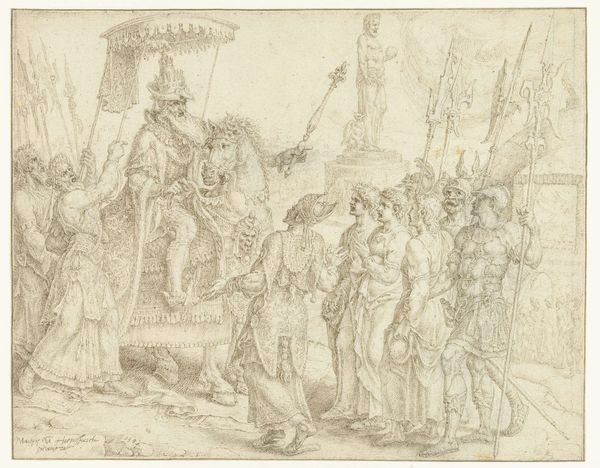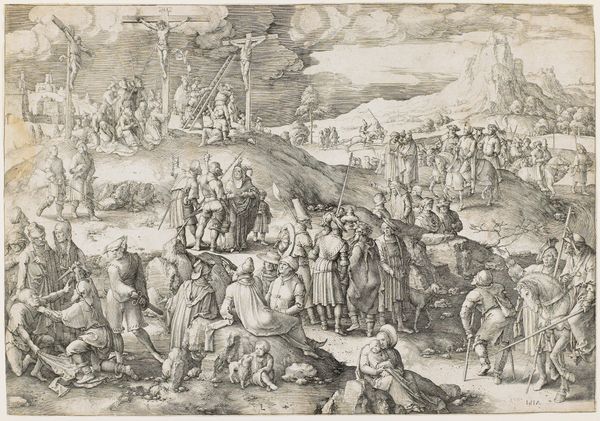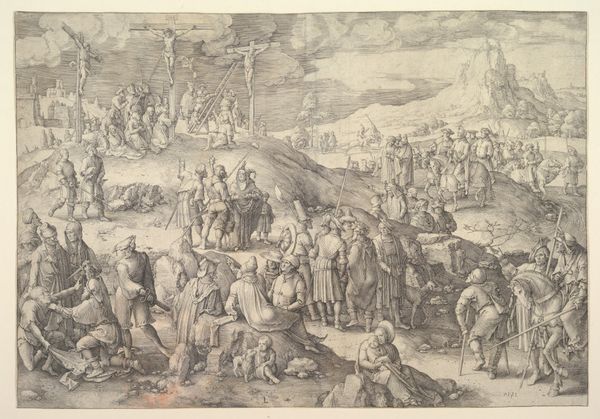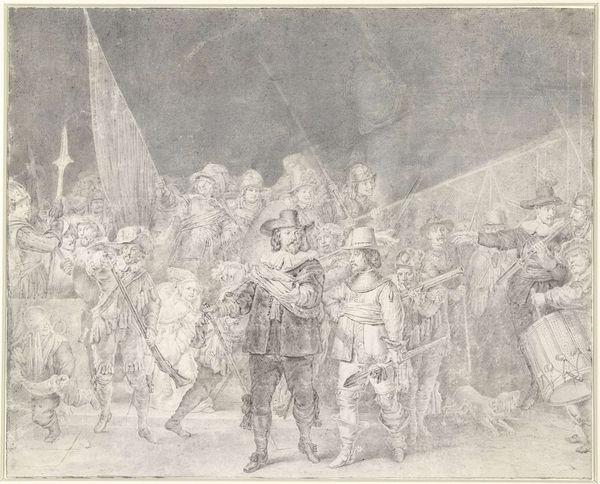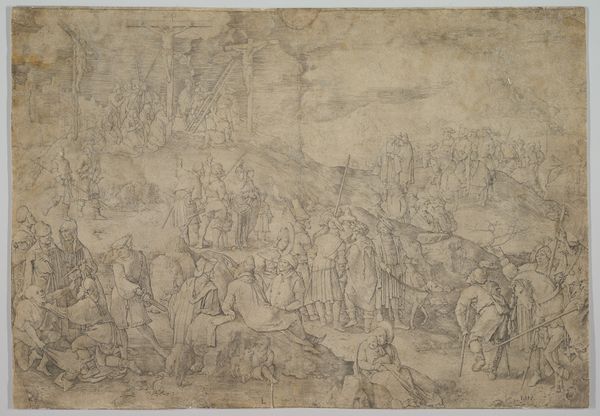
drawing, print, etching, engraving
#
drawing
#
ink drawing
# print
#
etching
#
landscape
#
figuration
#
11_renaissance
#
line
#
history-painting
#
northern-renaissance
#
engraving
Dimensions: height 284 mm, width 406 mm
Copyright: Rijks Museum: Open Domain
Editor: So, this is Lucas van Leyden's "The Conversion of Paul," created around 1509. It’s an engraving, a print… what immediately strikes me is the level of detail he achieves. What's your take? Curator: Well, consider the materiality first. Engraving demands a deep understanding of metal, acid, and pressure. The labor involved is intensive, requiring a mastery of craft not typically associated with “high art”. It’s not just the narrative that matters; it's the *means* of production that speaks to its value. How was such detail achieved? Editor: True, thinking about the physical process... all those lines! Does that have to do with why the landscape is so emphasized here? It's not just background. Curator: Precisely! The landscape isn’t mere scenery; it is a stage shaped by human interaction and exertion, a backdrop that both influences and is influenced by it. Look at how the etching renders the textures of the land, mimicking natural forms with industrial means. And the figures in this landscape... Editor: Yeah, all geared up. You can tell it took considerable work to create that level of intricacy across so many figures and outfits. Curator: Exactly. The labor of the artist mirrors, in a way, the implied labor of the soldiers and their social order. Also, consider that prints are reproducible commodities. What impact did making this art so reproducible have at the time? Editor: I hadn’t thought about that. I was so focused on just how painstaking each print would be to create. This opens my mind to appreciating more than the imagery! Curator: Indeed. By acknowledging process and means, we gain insight into art’s social, economic, and material existence. It's more than just the image; it’s about the how and the why it came into being.
Comments
No comments
Be the first to comment and join the conversation on the ultimate creative platform.
